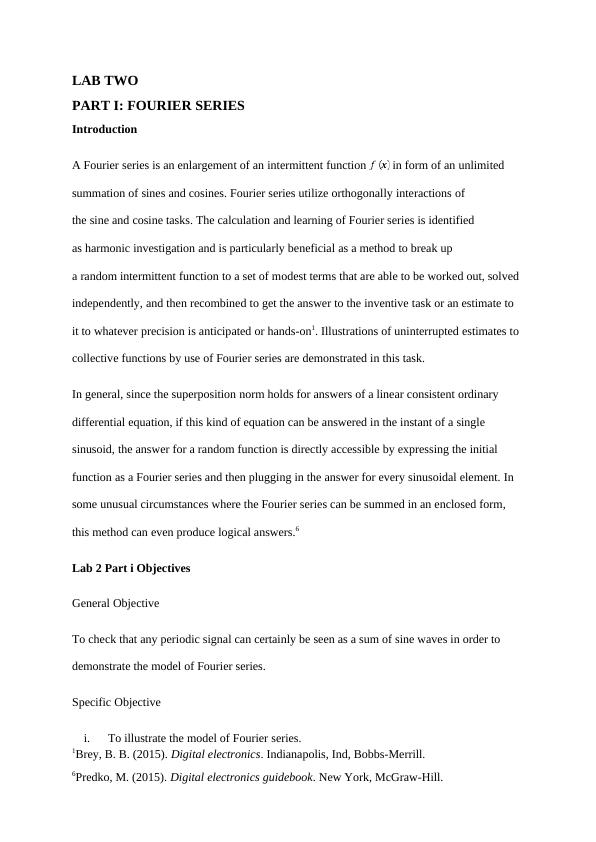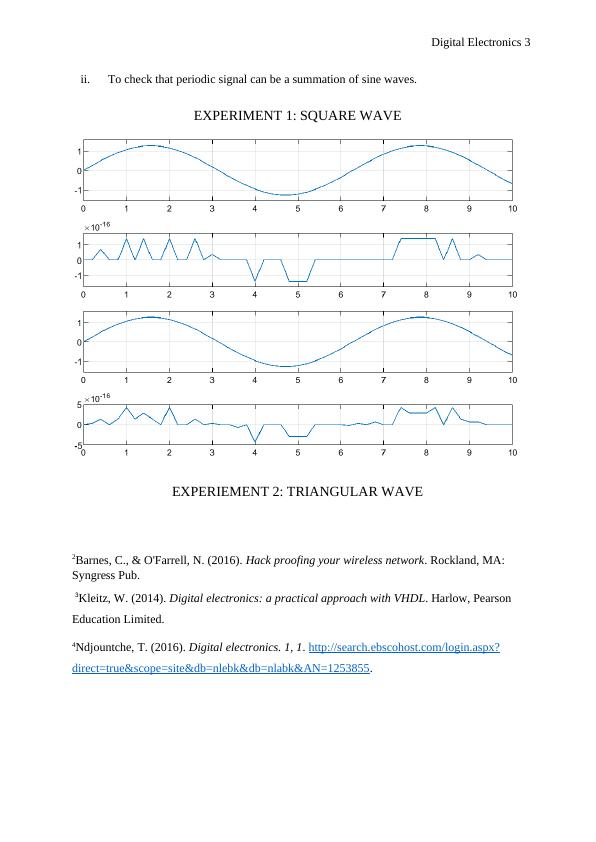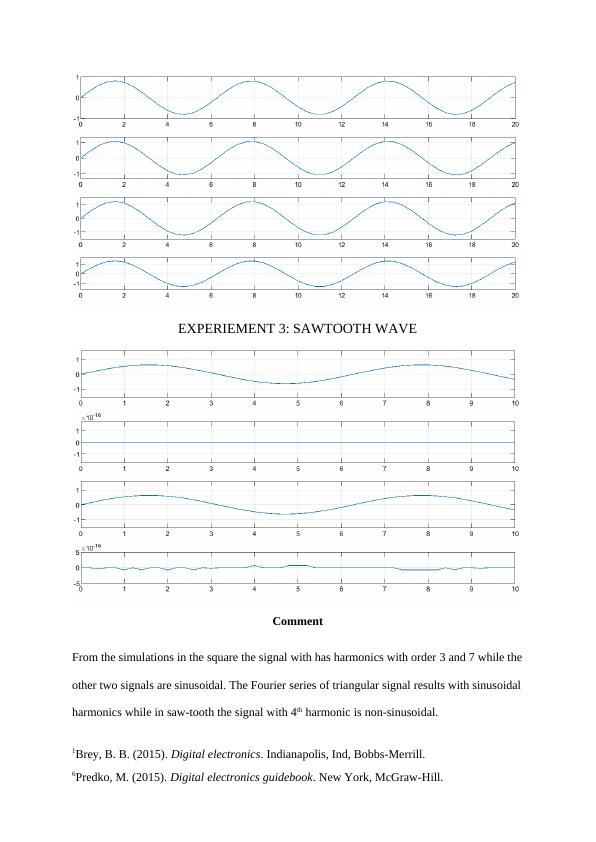Digital Electronics: Fourier Series and Noise in Digital Communication
11 Pages1900 Words83 Views
Added on 2023-02-01
About This Document
This document discusses the concepts of Fourier series and noise in digital communication in the field of digital electronics. It explains the use of Fourier series to break down periodic signals into a sum of sine waves and explores the effects of additive white Gaussian noise (AWGN) on digital transmission schemes. The document also includes MATLAB code for simulating the effects of noise on digital communication.
Digital Electronics: Fourier Series and Noise in Digital Communication
Added on 2023-02-01
ShareRelated Documents
End of preview
Want to access all the pages? Upload your documents or become a member.




